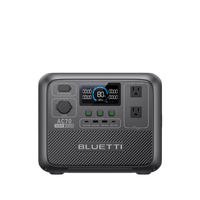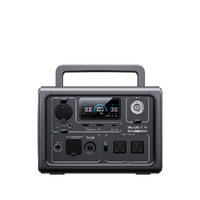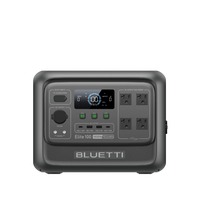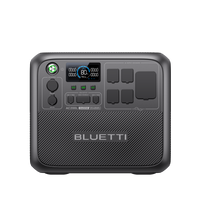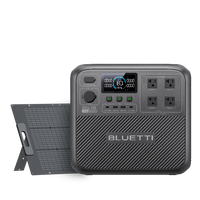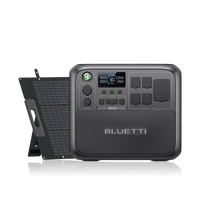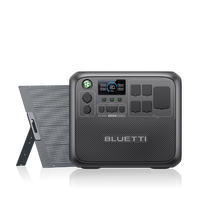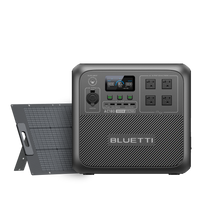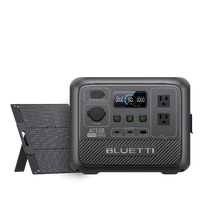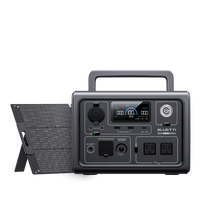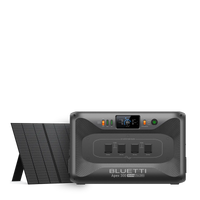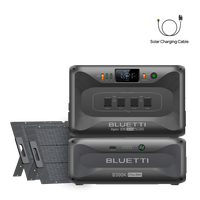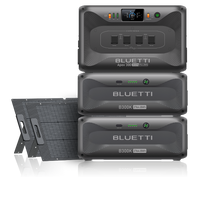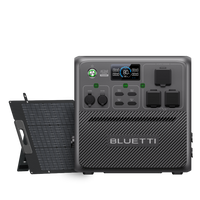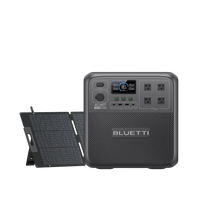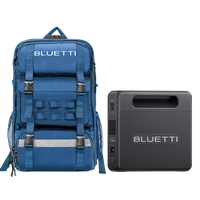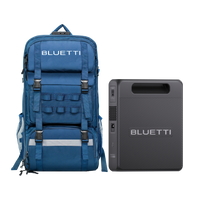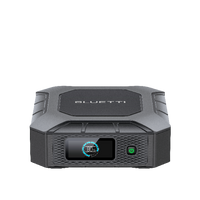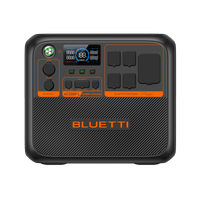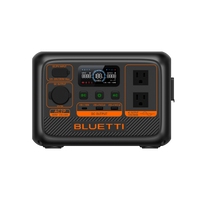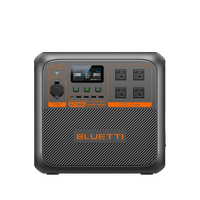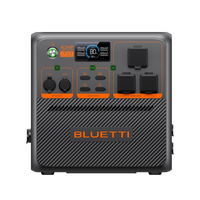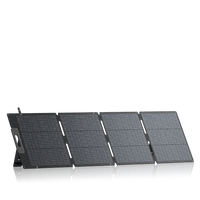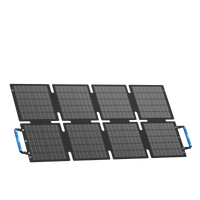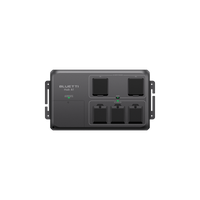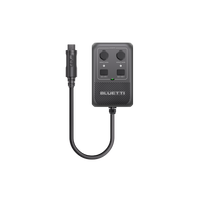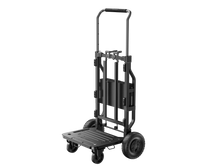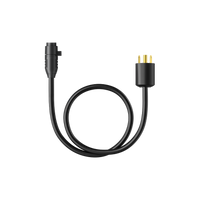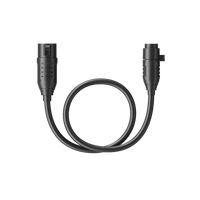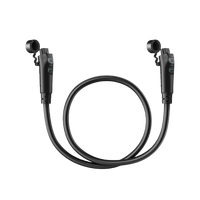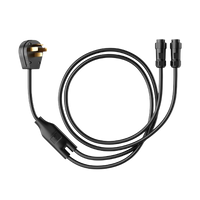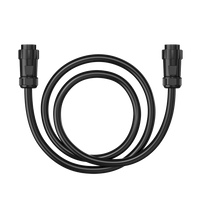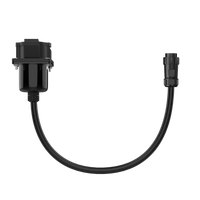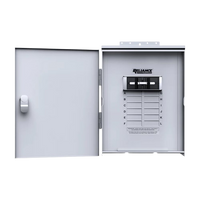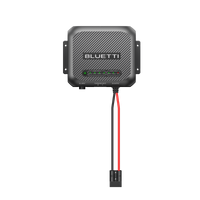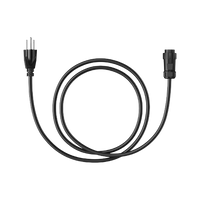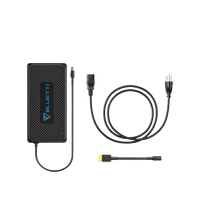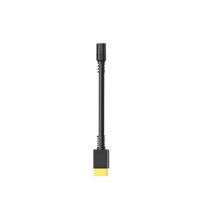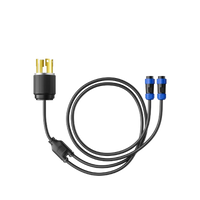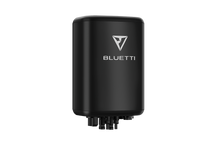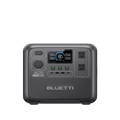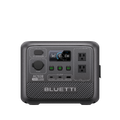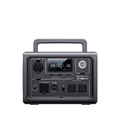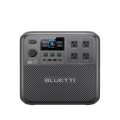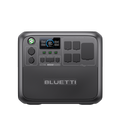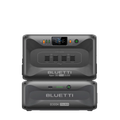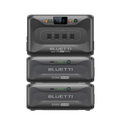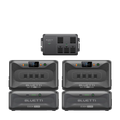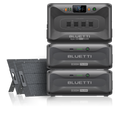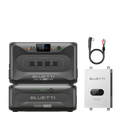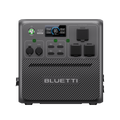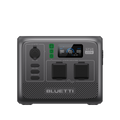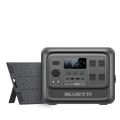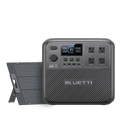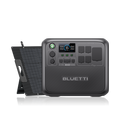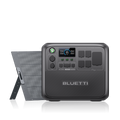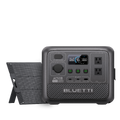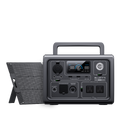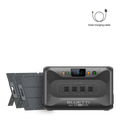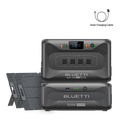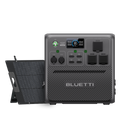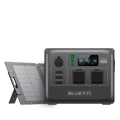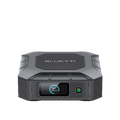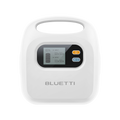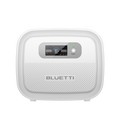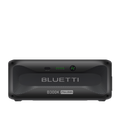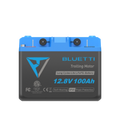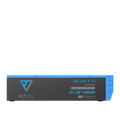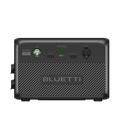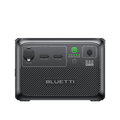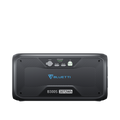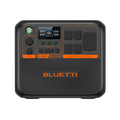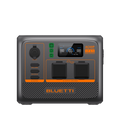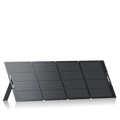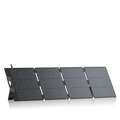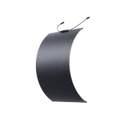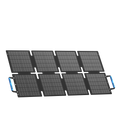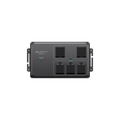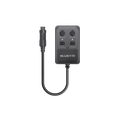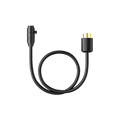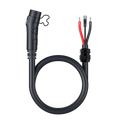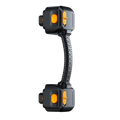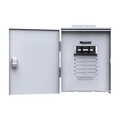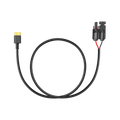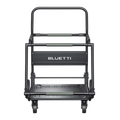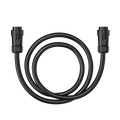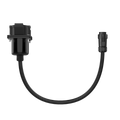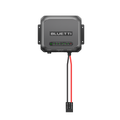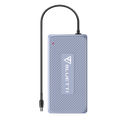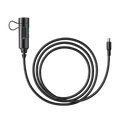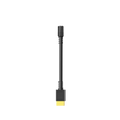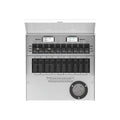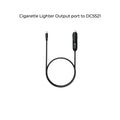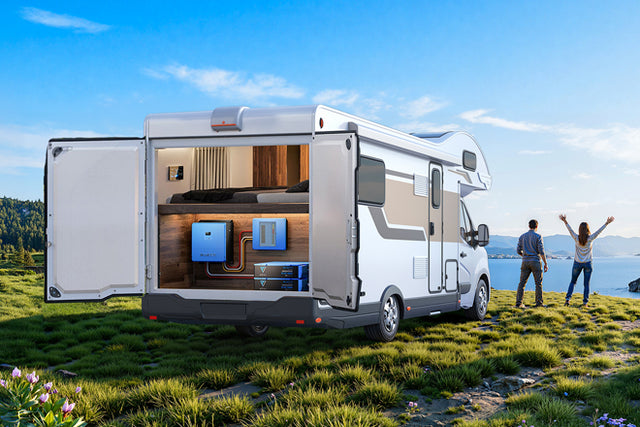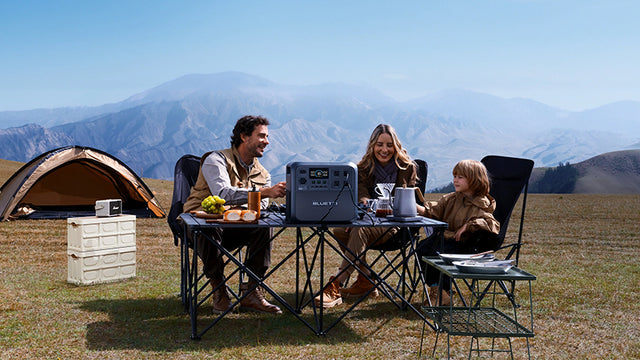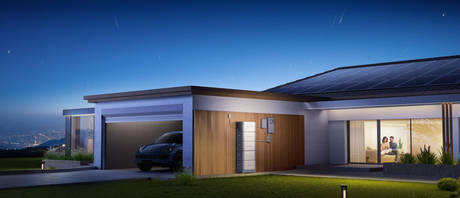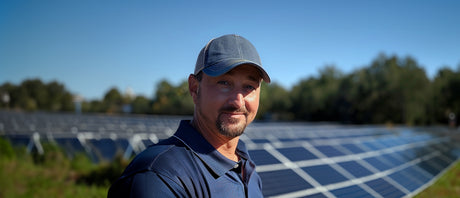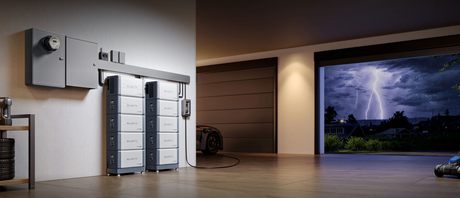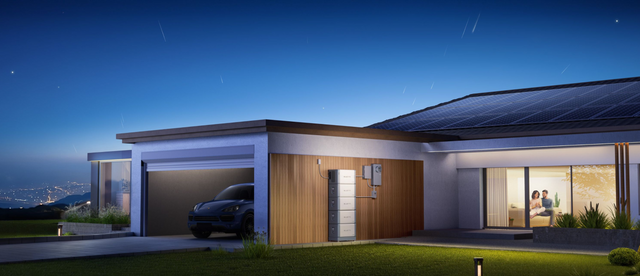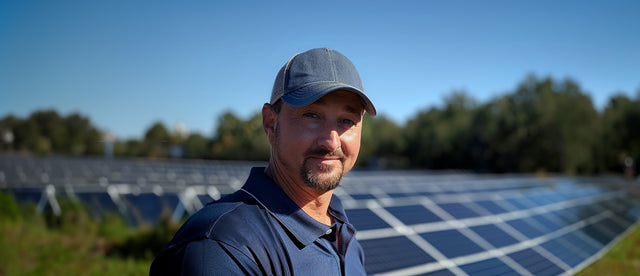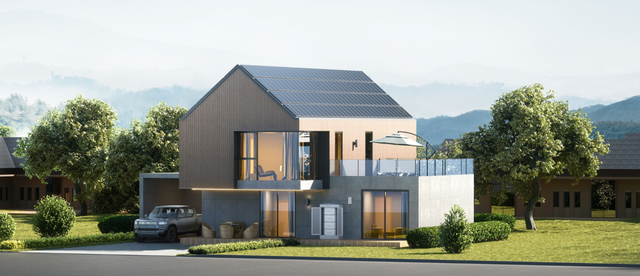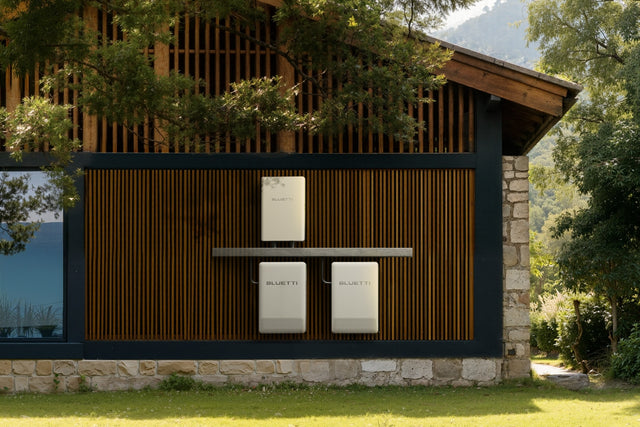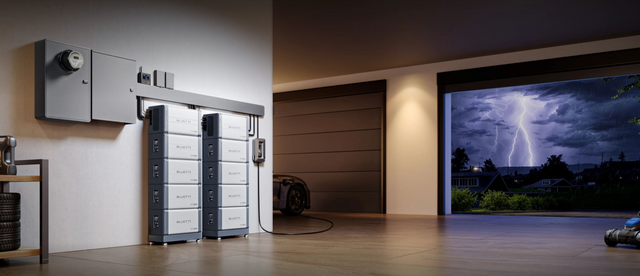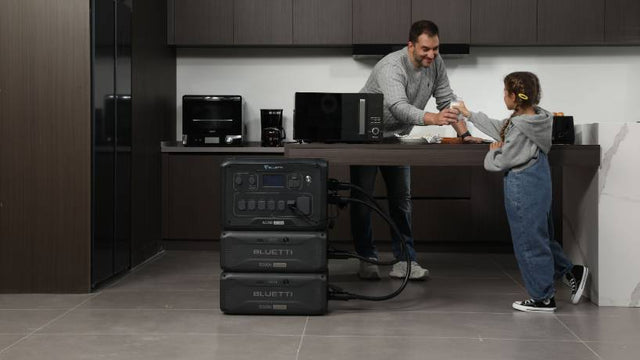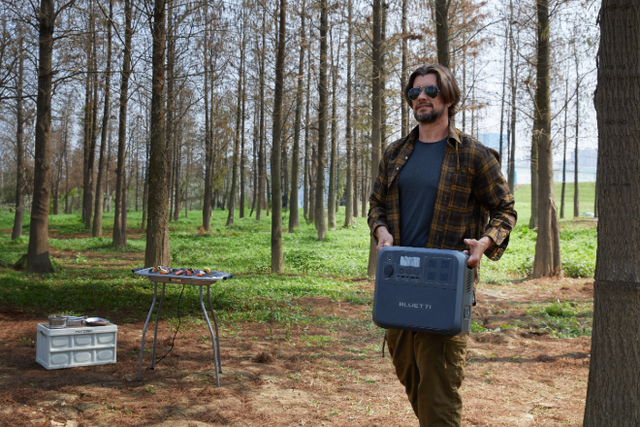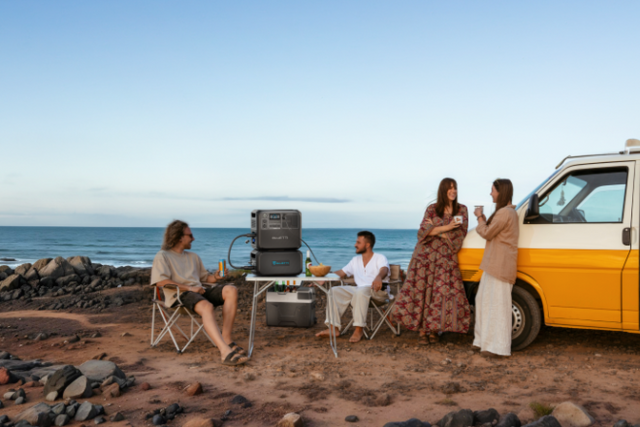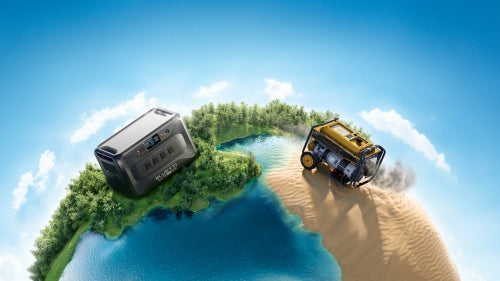Your cart is empty
Shop our productsWind and solar power are leading renewable energy sources. Solar energy is more universally accessible than wind power, which requires specific conditions. Still, wind power is a major electricity source in many countries, serving millions of households. Both of these power sources reduce dependency on fossil fuels to generate electricity. This article compares solar and wind power, covering their advantages, drawbacks, costs, and more. This article will help you in decision-making between solar and wind power sources.
Pros and Cons of Wind Power
Wind power is a renewable source of electricity. Wind turbines convert kinetic energy from wind into electricity for the grid. Let's see the advantages of wind power:
Pros:
Potential for power generation day and night
Wind turbines generate electricity 24/7 as long as wind speeds are sufficient.
Significant job creation in installation and maintenance
Wind turbines create jobs for thousands of people because of manufacturing, installation, and maintenance. As this economic source of electricity is mainly installed in rural areas, the people of rural areas especially benefit from this renewable energy source.
Ability to install both on land and offshore
Wind turbines can be installed anywhere, regardless of whether on land or in offshore areas. Offshore wind projects in Europe and Asia achieve higher capacity factors (40-50%) due to consistent winds. Wind turbines work more effectively where the wind speeds are high and steady.
Cons:
Impact on birds, bats, and other wildlife
Wind turbines are huge in structure and cover a large space in terms of height and area. Their large structure endangers birds and bats, especially migrating species.
Noise concerns for nearby residents
Wind turbines are huge in structure and make mechanical sounds, which disturb nearby communities, which is why these turbines are not installed in residential areas.
Aesthetic changes to landscapes
Due to the gigantic structure, the wind turbines cover a large space, altering the natural landscape.
Less suitable for individual residential properties
Although small-scale wind turbines are available, they are not effective for individual residential properties due to zoning restrictions and unsteady wind.

Pros and Cons of Solar Energy
When photovoltaic (PV) cells convert the heat and light from the sun into electricity, it is called solar energy. Let's figure out the potential advantages and disadvantages of solar energy as compared to wind power:
Pros:
Long-term cost savings with reduced utility bills
Solar panels produce energy from sunlight, which is free of cost, which is why it results in cost savings with reduced bills. The extra electricity produced by solar panels is sent to the grid station, which earns credits for future utility bills.
Easy integration with residential rooftops
These solar panels are of a small size and lightweight, which enables easy integration with residential rooftops.
Low maintenance requirements once installed
These solar panels often have lifespans of 20-25 years with very low maintenance, including cleaning and inverter checks.
Cons:
Energy generation is limited to daylight hours
Since solar panels produce electricity from sunlight, electricity production is dependent on sunlight hours.
High upfront investment in panels and installation
Solar energy production requires a high upfront investment because of the higher costs of solar panels, installation, and supporting infrastructure.
Environmental costs from mining materials and manufacturing panels
Mining silicon, silver, and rare earth metals for solar panels generates environmental impacts like habitat disruption.
Efficiency Comparison
Efficiency means how a source converts one form of energy to another. In this case, wind turbines and solar panels are the topics of discussion. This section presents a comparison between the efficiency of wind power and solar energy.
Wind turbines perform differently in the case of on-land installation and offshore installation. Onshore wind turbines have a 20-40% capacity factor, while offshore turbines reach 40-50% due to steadier winds.
The efficiency of solar panels mainly depends on the number of hours of sunlight and their orientation on the rooftop. If a solar panel receives 5-6 hours of sunlight and remains free of shadow, the efficiency is 15-23%.
Wind speeds are unpredictable and variable, making wind power less consistent than solar, which reliably produces energy during daylight hours.
Cost Analysis
The cost is an important factor when deciding between solar and wind power. In this section, the costs of solar energy and wind power are discussed briefly to make your decision easier.
In 2025, in the USA, the price for residential solar energy was approximately $2.53 to $3.30 per watt. The prices can be different in other countries, especially for those that import solar panels; prices can be higher.
The prices for wind power are slightly less than solar energy. For instance, the price for utility-scale wind power is $1.50 per watt. Although the price per watt seems less than solar energy, wind power has very high upfront costs because of the large area of land and installation infrastructure required.
The following table compares solar and wind power for residential and utility applications.
Table 1: Suitability of Solar and Wind power for residential and utility applications
|
Factor |
Solar Energy |
Wind Energy |
|
Best Scale |
Residential, small businesses, community projects |
Large-scale farms (onshore & offshore) |
|
Suitability for Homes |
Excellent—rooftop panels fit most houses |
Limited—small turbines are inefficient, and zoning restrictions are common |
|
Land/Space Needs |
Rooftops or small plots, minimal land required |
Requires wide open land or offshore areas |
|
Cost-effectiveness |
More economical for households and small-scale systems |
More economical at utility-scale installations |
|
Grid Integration |
Easy for residential or distributed generation |
Requires transmission lines and utility-level infrastructure |
Environmental Impact
Fossil fuels like coal are still used to produce electricity, transportation energy, heat for homes and industries, etc. These fossil fuels have a negative impact, leading to pollution, ozone layer depletion, etc. But these renewable energy sources pose a positive impact, how? Let's see in this section:
Solar panels and wind turbines produce electricity from sunlight and wind, emitting no carbon or sulfur. This reduction in greenhouse gases leads to a pollution-free environment.
It's a universal rule: everything has its advantages and disadvantages. The same rule applies to these renewable sources of energy.
Wind turbines are huge in structure, which affects wildlife due to mechanical sounds. Their big fans negatively affect the birds and bats.
The production of solar panels starts with mining the required material, then refining, and finally, the chemical processing. Solar panel production generates hazardous waste, and disposal at end-of-life is challenging.
Fossil fuels release large amounts of carbon, sulfur, and other gases. Since these renewable sources use sunlight and wind to directly convert them to electricity, there is minimal impact on the environment.
Suitability and Hybrid Options
Solar energy and wind power are suitable for different areas because one produces electricity using sunlight, while the other produces electricity using wind. Both of these systems offer reliability if they are used according to their suitability.
For open, windy areas such as coastal zones, plains, and offshore locations, wind power is suitable because in these areas, wind blows at high, steady speeds continuously. In rural areas, wind power is not efficient due to low wind speeds and difficulty meeting zoning requirements.
The sunny areas, such as Las Vegas, Phoenix, etc. Receive abundant sunlight, so solar energy is best suited for such areas. For more efficiency, unobstructed rooftops are even better. Solar energy can be used for households or small businesses.
If you need 24/7 independence from electricity produced by fossil fuels or a round-the-clock energy supply, you can install both solar and wind power sources. The solar energy will be efficient during the daylight, and in evenings or cloudy weather, wind power will fulfill the requirements.
Recommended Products
Any system performs best when the supportive components are of good quality and reliable. We recommend these products to get even better performance for wind power or solar energy.
Elite 100 V2 portable power station
BLUETTI Elite 100 V2 is a portable, compact backup station that stores extra electricity produced by solar or wind, making it ideal for homes and grid stations. The following table presents its core specs and their uses.
Table 2: Features of BLUETTI Elite 100 V2
|
Feature |
Value |
Why it matters here |
|
Battery capacity |
1,024Wh (LiFePO₄) |
Stores solar or wind energy for night and outages. |
|
AC output |
1,800W continuous (2,700W lifting power) |
Runs most home appliances during power cuts. |
|
Solar input |
Up to 1,000W (built-in MPPT) |
Can charge efficiently from solar panels. |
|
UPS function |
≤ 10 ms switchover |
Keeps devices running seamlessly during outages. |
|
Portability |
~11.5 kg |
Easy to move, suitable for off-grid or home backup. |
Apex 300 home backup power system
For even higher reliability, you can use the BLUETTI Apex 300, a high-capacity backup station designed to store and deliver strong power efficiently when required. The other key specs are given below:
Battery Type: LiFePO₄
AC Output Power: 3,840W Max (up to 7,680W lifting power)
UPS Function: ~20 ms switchover
Solar Input: 2x1200W, 12-60 VDC, 2x20A
Expandable Capacity: Up to 6 × B300K/B300S/B300 per unit
Fast Charging: Up to 3,840W (Turbo mode, 80% in 45 minutes)
Conclusion
In this era of global warming and ozone depletion, renewable energy sources such as wind power and solar energy are essential tools to transform one form of energy into another without carbon emissions. These energy sources fulfill electricity requirements without affecting the environment. If you want to choose between solar energy and wind power, it is important to consider the geography, climate, and scale of energy needs. For instance, in windy areas, wind power is successful, and in sunny areas, solar energy is more efficient. Both systems can be used individually and can be used together for more energy security and reliability.
FAQ
Q: Can I use wind turbines at home?
A: Small turbines exist, but zoning, noise, and low wind make them impractical for most homes.
Q: How long do solar panels last?
A: 25–30+ years with 80%+ efficiency retention.
Q: Is hybrid solar + wind worth it?
A: Yes—solar for day, wind for night/cloudy weather. Add battery storage for 24/7 power.
Shop products from this article
Be the First to Know
You May Also Like




